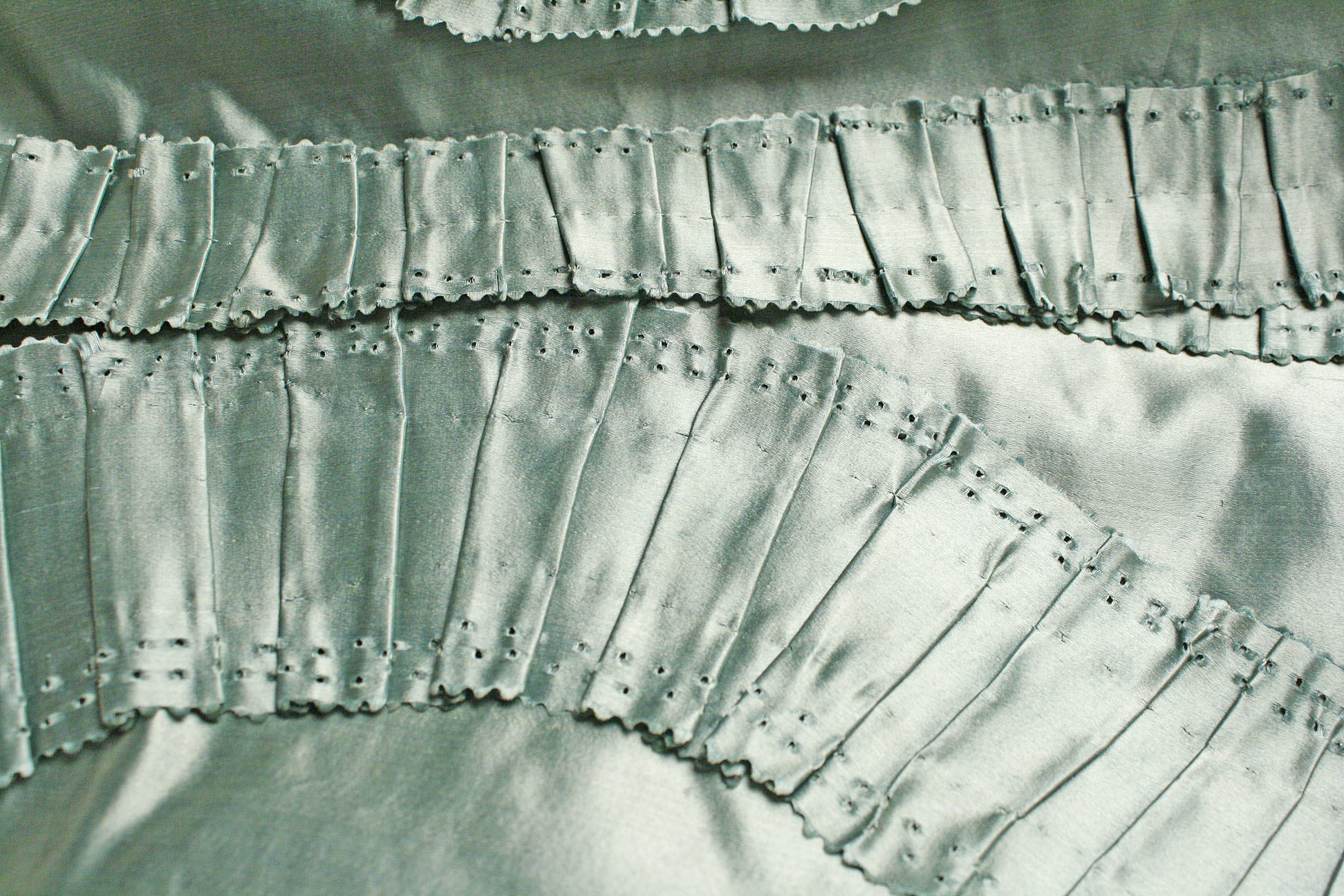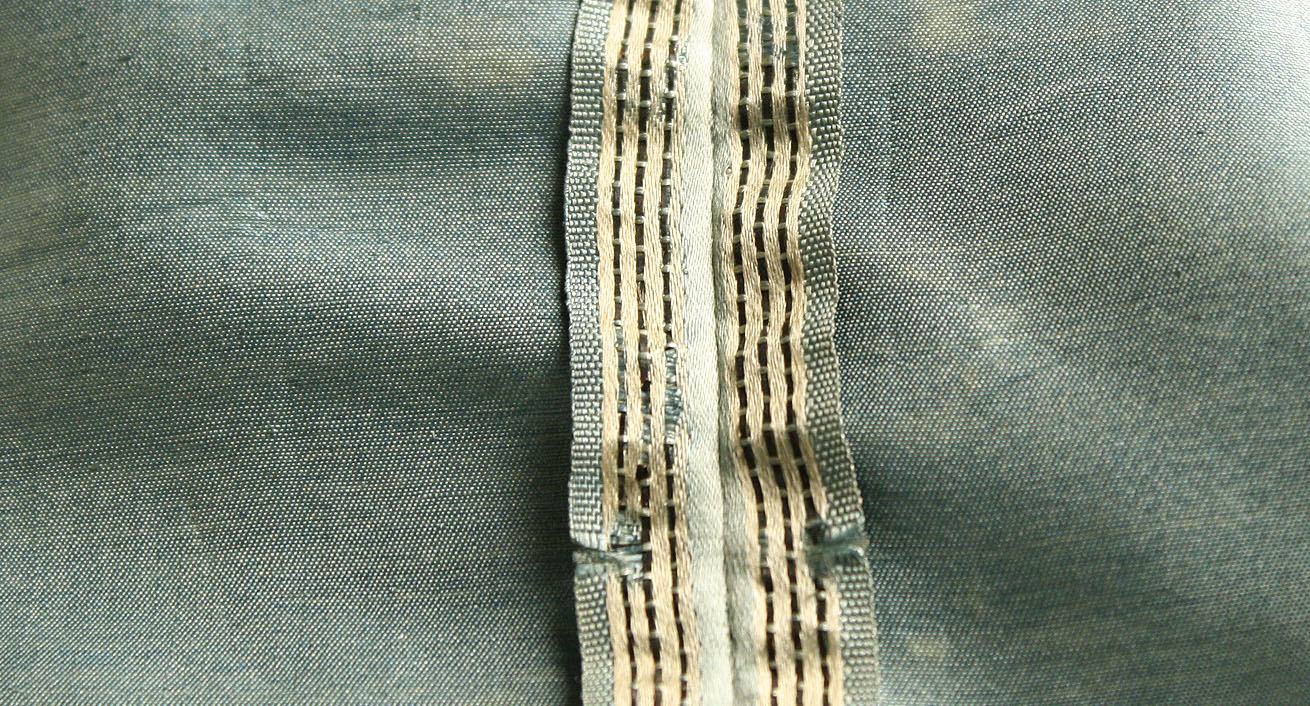Robe à la française
Not on view
A formal dress was not considered finished until it had been trimmed with robings along the opening of the bodice, down the skirt front, and along the edges of the pagoda sleeves. Robings of gauze, ribbons, fringe, or silk flowers were supplied by a milliner and could be very expensive, as they were complicated and time-consuming to make by hand. Further, ladies would update their gowns from season to season by changing the robings. This particular dress substitutes for fancy robings self-fabric ruching with a punchwork pattern and pinked edge, made with an awl and a sharp rolling wheel much like a pastry cutter. The National Gallery of Victoria, Melbourne, has a similarly trimmed dress in bright canary-yellow corded silk, and examples can be found in British and American Colonial portraits.
This image cannot be enlarged, viewed at full screen, or downloaded.
This artwork is meant to be viewed from right to left. Scroll left to view more.




